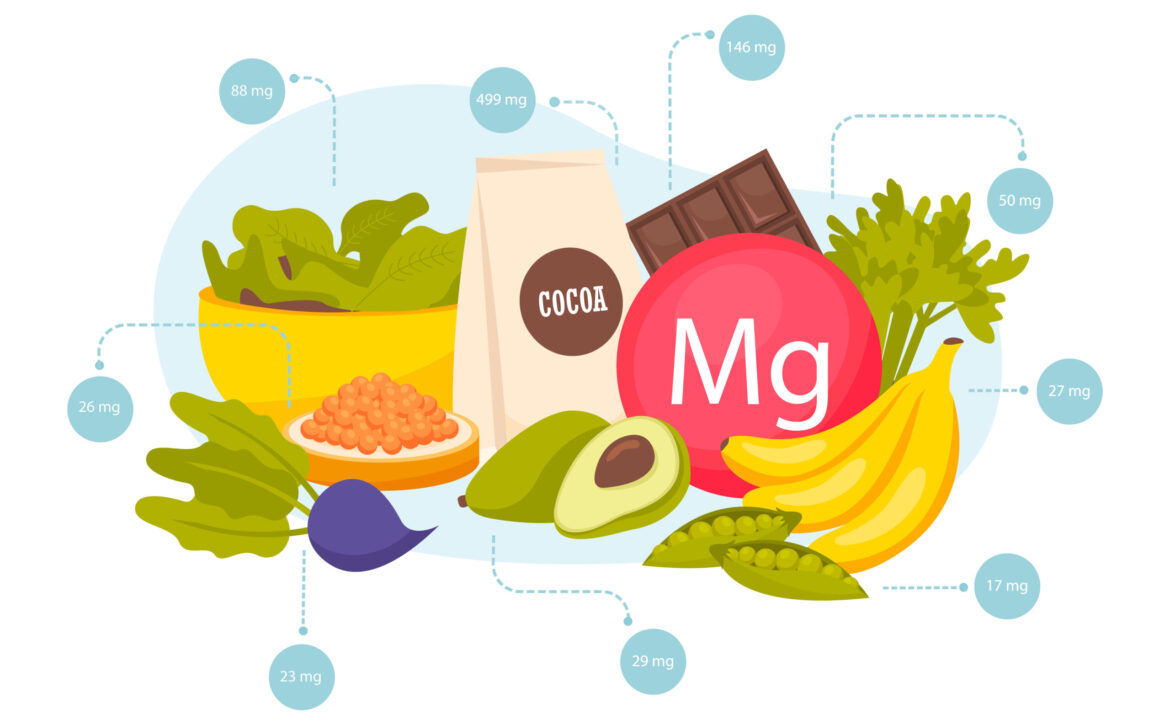Easing Migraine Symptoms with Magnesium-Rich Foods
Introduction: What Are Migraines and Why Magnesium Matters
Migraines, a prevalent and and debilitating condition that affects millions of people worldwide. They can cause severe throbbing pain, usually on one side of the head, along with nausea, vomiting, and sensitivity to light and sound. Migraine episodes can extend for hours or even days, and interfere with your daily activities and quality of life.
While there is no definitive remedy for migraines, there are ways to prevent and treat them. One of the factors that may influence migraine frequency and severity is magnesium, a mineral that plays a vital role in many bodily functions, including nerve and muscle activity, blood pressure regulation, energy production, and brain health.
In this article, we will explore how magnesium can help ease migraine symptoms, what foods are rich in magnesium, and how you can incorporate them into your diet. We will also share some tips from our top head specialist doctor in Mumbai at the Department of RNR Medicine at Jaslok Hospital.
How Magnesium Can Help with Migraines
Magnesium plays a vital role in numerous chemical reactions in our body, many of which are closely related to the underlying processes of migraines. The doctors at our headache clinic in Mumbai suggests that, magnesium can:
- Influence the activity of neurotransmitters like serotonin and glutamate, pivotal in pain perception and inflammation.
- Stabilize blood vessels in the brain, preventing excessive constriction or dilation, known triggers for migraines.
- Suppress the release of substance P, a neuropeptide central to pain and inflammation in the nervous system.
- Boost the production of adenosine triphosphate (ATP), the primary energy source for cells, particularly in the brain.
- Guard the brain against oxidative stress and excitotoxicity, processes that can harm neurons and lead to migraines.
Magnesium deficiency is more common in people with migraines than in healthy individuals. Moreover, magnesium supplementation has been found to reduce the frequency and intensity of migraines in some patients. Magnesium can also enhance the effects of some migraine medications, such as triptans and nonsteroidal anti-inflammatory drugs (NSAIDs).
However, not all forms of magnesium are equally effective. Certain forms exhibit higher bioavailability, signifying that they are absorbed and utilized more efficiently by the body. As advised by our top migraine specialist doctor in Mumbai at Jaslok Hospital, here are some of the most beneficial forms of magnesium for managing migraines:
-
Magnesium citrate:
This is a highly absorbable form of magnesium that can effectively penetrate the blood-brain barrier, reaching brain cells. It also aids in regular bowel movements, potentially preventing constipation, a side effect of certain migraine medications.
-
Magnesium glycinate:
This is a chelated form of magnesium bound to glycine, an amino acid known for its calming effects on the brain. It can improve sleep quality and mood, offering potential benefits for migraine sufferers.
-
Magnesium malate:
This is a form of magnesium that is bound to malic acid, a compound that is involved in energy production. It can help boost ATP levels in the brain and reduce fatigue and muscle pain associated with migraines.
-
Magnesium oxide:
This is a less absorbable form of magnesium that can act as a laxative. It can help relieve constipation caused by some migraine medications or by low-fiber diets.
The recommended daily intake (RDI) of magnesium for adults is 310-420 mg per day, depending on age and sex. However, some people may need higher doses to prevent or treat migraines. The optimal dose may vary from person to person depending on their severity and frequency of migraines, their magnesium status, their diet, their medication use, and their individual tolerance.
It is advised to consult with your regular healthcare provider before taking any magnesium supplements to determine the best dose and form for you. Your doctor can also monitor your magnesium levels and adjust your dose accordingly. Taking too much magnesium can cause side effects such as diarrhea, nausea, abdominal cramps, low blood pressure, irregular heartbeat, and kidney problems.
What Foods Are Rich in Magnesium
While magnesium supplements can be helpful for some people with migraines, they are not a substitute for a healthy diet. Getting enough magnesium from food sources can provide other benefits such as fiber, antioxidants, vitamins, minerals, and phytochemicals that can support your overall health and well-being.
There are several foods that are high in magnesium include::
-
Leafy green vegetables:
These are among the best sources of magnesium as well as other nutrients such as iron, calcium, vitamin K, vitamin C, and folate. Some examples are spinach, kale, swiss chard, collard greens, and mustard greens.
-
Nuts and seeds:
These are not only high in magnesium but also in healthy fats, protein, fiber, and antioxidants. Some examples are almonds, cashews, pistachios, walnuts, sunflower seeds, pumpkin seeds, flax seeds, and chia seeds.
-
Legumes:
These are plant-based sources of protein that are also rich in magnesium, fiber, iron, folate, and phytochemicals. Some examples are beans, lentils, peas, chickpeas, and soybeans.
-
Whole grains:
These are grains that have not been refined and retain their bran, germ, and endosperm. They are high in magnesium, fiber, B vitamins, and phytochemicals. Some examples are oats, quinoa, brown rice, barley, buckwheat, and millet.
-
Dark chocolate:
This is a delicious treat that is also a good source of magnesium, iron, copper, manganese, and antioxidants. However, it is also high in calories, fat, and sugar, so moderation is key. Choose dark chocolate with at least 70% cocoa solids for the best benefits.
-
Yogurt:
This is a fermented dairy product that is high in magnesium, calcium, protein, probiotics, and vitamin B12. It can also help improve your digestion and immunity. Choose plain yogurt without added sugar or artificial sweeteners and add your own fruits or nuts for flavor and nutrition.
-
Avocados:
These are creamy fruits that are high in magnesium, potassium, monounsaturated fats, fiber, vitamin K, vitamin C, and folate. They can also help lower your cholesterol levels and improve your heart health. You can eat them raw or add them to salads, sandwiches, smoothies, or dips.
-
Bananas:
These are sweet fruits that are high in magnesium, potassium, fiber, vitamin C, and vitamin B6. They can also help regulate your blood pressure and blood sugar levels and prevent muscle cramps. You can eat them as a snack or add them to cereals, oatmeal, smoothies, or baked goods.
How to Incorporate Magnesium-Rich Foods into Your Diet
Eating more magnesium-rich foods can be easy and enjoyable if you follow some simple tips provided by the best doctors for headache treatment in Mumbai:
- Kickstart your morning with a magnesium boost! Try a hearty bowl of oatmeal topped with your favorite nuts and fruits, or go for a yogurt parfait with crunchy granola and a handful of juicy berries. If you’re a fan of smoothies, blend up some spinach, a ripe banana, and creamy almond milk for a nutrient-packed start.
- Keep the magnesium goodness going throughout the day. Snack time? Grab a small handful of nuts or seeds, or treat yourself to a square of dark chocolate. Feeling a bit more peckish? Pair up a banana with a dollop of peanut butter – it’s a tasty and magnesium-rich combo!
- Sneak in those leafy greens wherever you can. Toss them into your salads, layer them into sandwiches or wraps, or let them swirl in your soups for an extra nutrient punch. Feeling fancy? Sauté them with a hint of garlic and a drizzle of olive oil, or blend them up into a zesty pesto or creamy hummus.
- Switch things up with whole grains. Opt for quinoa or brown rice as the base for your favorite salads or grain bowls. And if you’re feeling a bit adventurous, try your hand at homemade breads, muffins, or pancakes using whole wheat or oat flour.
- Give legumes the spotlight on your plate. From hearty bean burgers to soul-soothing lentil soup, the options are endless. How about a zesty chickpea curry or a vibrant soybean stir-fry? You can even toss them into salads, pasta dishes, or hearty casseroles for an extra protein and magnesium boost.
- Wrap up your day with a sweet magnesium treat! Indulge in a square of dark chocolate or savor a creamy cup of yogurt. Feeling a bit adventurous? Whip up your very own chocolate pudding with cocoa powder, milk, and honey, or create a refreshing frozen yogurt with your favorite fruits and a drizzle of honey.
Magnesium is an essential mineral that can help ease migraine symptoms by modulating various processes in the brain and body. Getting enough magnesium from food sources can also provide other benefits for your health and well-being.
However, some people may need magnesium supplements to prevent or treat migraines more effectively. If you suffer from migraines and want to know more about magnesium supplementation or other treatment options, you can consult with the top migraine doctor specialist in Mumbai at Jaslok Hospital’s RNR Medicine.
Discover natural relief for migraines with diet and exercise. Read more in our blog post: Migraine Relief: How Diet and Exercise Can Help
Hospital for TMS for Migraine in Mumbai
Jaslok Hospital is one of the leading hospital for TMS for migraine in Mumbai. We have a team of experienced neurologists and migraine therapy doctors in Mumbai who can diagnose and treat migraines using the latest techniques and technologies. The experts at our headache & migraine clinic in Mumbai also have a approach that includes nutrition, stress management, lifestyle modification, and complementary therapies.
At Jaslok Hospital, the best doctors for headache treatment in Mumbai care about your health and happiness. We want to help you live a pain-free and fulfilling life. Contact us today to book an appointment or learn more about TMS treatment for migraine.











